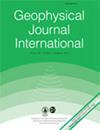Thermal rock magnetic cycling (TRMC): a method to track Thermal alteration details for palaeointensity interpretations
IF 2.8
3区 地球科学
Q2 GEOCHEMISTRY & GEOPHYSICS
引用次数: 0
Abstract
Accurate absolute palaeointensity is essential for understanding dynamo processes on the Earth and other planetary bodies. Although great efforts have been made to propose techniques to obtain magnetic field strength from rock samples, such as Thellier-series methods, the amount of high-fidelity palaeointensities remains limited. One primary reason for this is the thermal alteration of samples that pervasively occurred during palaeointensity experiments. In this study, we developed a comprehensive rock magnetic experiment, termed thermal rock magnetic cycling (TRMC), that can utilize measurements of critical rock magnetic properties at elevated temperatures during multiple heating-cooling cycles to track thermal changes in bulk samples and individual magnetic components with different Curie temperatures in samples for palaeointensity interpretations. We demonstrate this method on a Galapagos lava sample, GA 84.6. The results for this specimen revealed that GA 84.6v underwent thermophysical alteration throughout the TRMC experiment, resulting in changes in its remanence carrying capacity. These findings were then used to interpret the palaeointensity results of specimen GA 84.6c, which revealed that the two-slope Arai plot yielded two linear segments with distinct palaeointensity values that were both biased by thermophysical alteration. To further test the TRMC method, we selected another historical lava sample (HS 2) from Mt. Lassen, detecting slight thermal-physical changes after heating the specimen HS 2–8C to a target temperature of 400° C. We also isolated a stable magnetic component with a Curie temperature below 400° C using the TRMC method, which may provide a more reliable palaeointensity estimate of 51 μT. By providing a method for tracking thermal alteration independent of palaeointensity experiments, the TRMC method can explore subtle, unrecognizable thermal alteration processes in less detailed palaeointensity measurements, which can help to assess the thermal stability of the measured samples and interpret the changes in the TRM unblocking spectrum and palaeointensity estimates, facilitating the acquisition of more reliable records for constrain the formation of the inner core and the evolution of Earth's magnetic field.热岩磁循环(TRMC):一种用于古强度解释的热蚀变细节跟踪方法
准确的绝对古磁场强度对于了解地球和其他行星体的动力过程至关重要。尽管人们已经做出巨大努力,提出了从岩石样本中获取磁场强度的技术,如 Thellier 系列方法,但高保真古强度的数量仍然有限。造成这种情况的一个主要原因是,在古强度实验过程中,样本普遍发生了热蚀变。在这项研究中,我们开发了一种称为热岩石磁循环(TRMC)的综合岩石磁性实验,可以利用多次加热-冷却循环过程中在高温下对关键岩石磁性的测量,来跟踪大块样品和样品中不同居里温度的单个磁性成分的热变化,从而进行古强度解释。我们在一个加拉帕戈斯熔岩样本 GA 84.6 上演示了这种方法。该样本的结果显示,GA 84.6v 在整个 TRMC 实验过程中经历了热物理变化,导致其剩磁承载能力发生变化。这些发现随后被用来解释 GA 84.6c 试样的古强度结果,结果显示双斜率 Arai 图产生了两个具有不同古强度值的线段,这两个线段都受到热物理变化的影响。为了进一步测试 TRMC 方法,我们选择了拉森山的另一个历史熔岩样本(HS 2),在将样本 HS 2-8C 加热到 400° C 的目标温度后,检测到了轻微的热物理变化。我们还使用 TRMC 方法分离出了居里温度低于 400° C 的稳定磁性成分,这可能会提供更可靠的 51 μT 古强度估计值。TRMC方法提供了一种独立于古强度实验的追踪热改变的方法,可以在不太详细的古强度测量中探索微妙的、无法识别的热改变过程,这有助于评估所测样品的热稳定性,解释TRM解锁谱和古强度估计值的变化,促进获得更可靠的记录,以制约内核的形成和地球磁场的演化。
本文章由计算机程序翻译,如有差异,请以英文原文为准。
求助全文
约1分钟内获得全文
求助全文
来源期刊

Geophysical Journal International
地学-地球化学与地球物理
CiteScore
5.40
自引率
10.70%
发文量
436
审稿时长
3.3 months
期刊介绍:
Geophysical Journal International publishes top quality research papers, express letters, invited review papers and book reviews on all aspects of theoretical, computational, applied and observational geophysics.
文献相关原料
| 公司名称 | 产品信息 | 采购帮参考价格 |
|---|
 求助内容:
求助内容: 应助结果提醒方式:
应助结果提醒方式:


